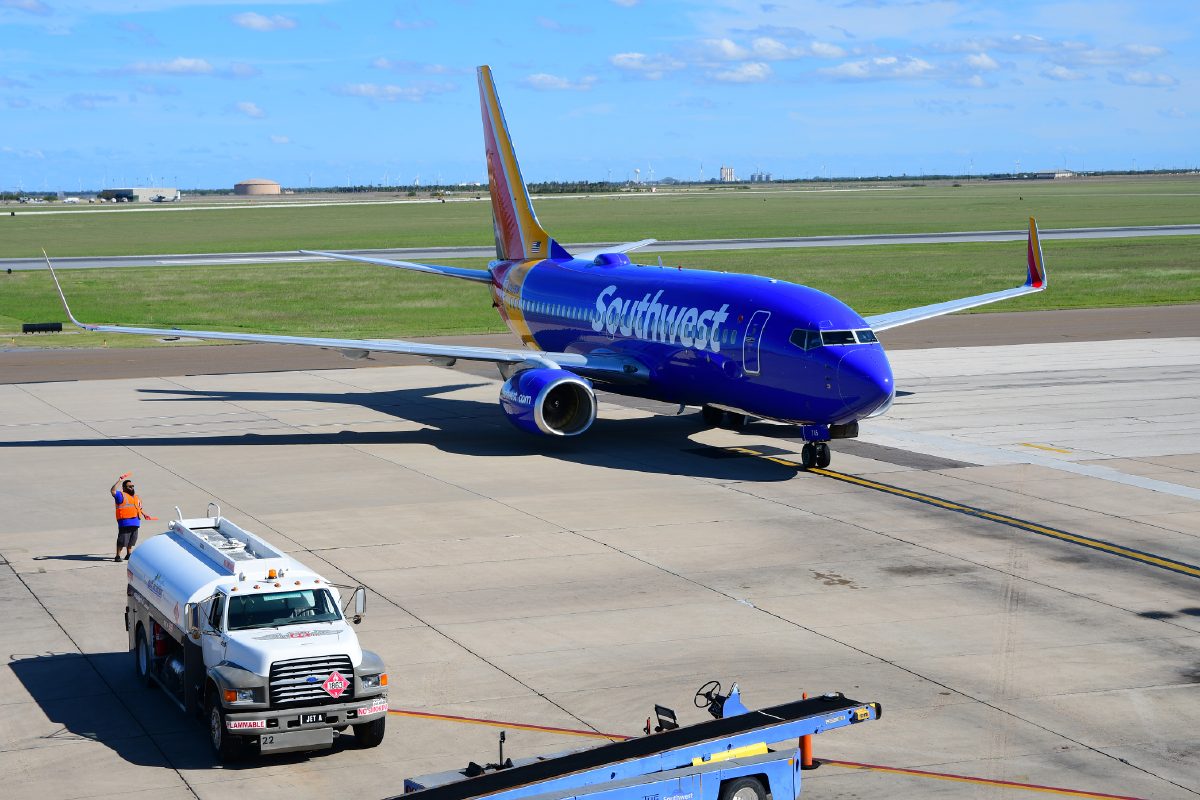HARLINGEN — Despite last week’s announcement its grounded Boeing 737 Maxes won’t fly before Aug. 10 at the earliest, an executive with Southwest Airlines says plans to expand its domestic flights this summer are still a go.
Southwest has moved aggressively to expand its footprint domestically. The grounding of the Maxes — Southwest is the domestic airline with the most Maxes with 34 in its fleet — complicated these plans over the past year.
But Brad Hawkins said the airline will be expanding its flights this summer, Max or no Max.
“I think our frustration is muted just by the wish that we could answer demand with more air service,” said Hawkins, a Southwest spokesman and communications senior adviser, who was in the Valley on Friday for the unveiling of a downtown mural honoring the late Southwest CEO Herb Kelleher.
“Our network planners, who today (Friday) are being recognized as Heroes of the Heart, which is our highest internal honor, have done a fabulous job of surgically removing about 300 flights a day out of 4,000 in this summer schedule that you’re referencing, where we’re impacting the fewest number of people,” he added.
In October 2018, a 737 Max flown by Indonesia’s Lion Air crashed, killing 189 people. Investigators are focusing on the plane’s anti-stall software. A second crash of an Ethiopian Airlines 737 Max in March killed all 157 people on board, and the Boeing 737 Max has been grounded by aviation regulators since.
The 189-passenger 737 Max is not a regular visitor to Valley International Airport, flying in occasionally as a replacement aircraft. But airport officials here are concerned that airlines with grounded 737 Maxes will continue to reassign replacement jets from other flights to make up shortfalls at airports other than Valley International.
An additional complicating factor for Southwest is the airline generally operates on what is a called a point-to-point system instead of the hub-and-spoke system favored by United Airlines and American Airlines.
The Southwest network has evolved into what could be called “focus cities” with higher numbers of flights. With a number of focus cities in the network, Southwest can offer more connections than some of the traditional hub-and-spoke operations.
A Southwest jet, for example, may hop to multiple cities before returning to its original airport, which gives the airline more flexibility, but also is a route structure which adds logistical challenges compared to hub-and-spoke airlines, according to some analysts.
Despite the added complexity of its point-to-point system, and the loss of the 737 Max, Southwest managed a major expansion in the Pacific Ocean region last year by adding more flights to and from Hawaii.
“Southwest is the largest airline in the country, and Southwest is the biggest carrier of customers in California,” Hawkins said. “Hawaii is the No. 1 destination for California, so we added Hawaii initially as a function of our
California business.”
Today Southwest has 28 flights to Hawaii, and has added 39 intra-island flights, Hawkins said.
“When we started exploring and getting over there, we realized there was a huge need for competition within the state of Hawaii,” he added. “So we have been able to come in and lower airfare tremendously, to give value and extra seats so it’s been a win-win and we’re just about to celebrate our first anniversary on St. Patrick’s Day.”
So far this year within the continental United States, Hawkins says, Southwest has managed to juggle the complications of trying to expand its domestic flights with its Boeing 737 Maxes still on the ground. Southwest announced its Maxes won’t be flying until at least Aug. 10, pushing back a deadline from June.
“We’re not eliminating all service from Point A to Point F, we’re going in and cutting specific flights on days of the week where it makes sense, or where we can connect people or flow them a different way,” Hawkins said. “The frustration really takes a backseat to the concern of making sure that we fly the safest airplanes possible.
“And we have confidence in the Max and we know that Boeing will work out the issues and the FAA will get the approval, and that is 10 percent of our fleet, which will come back soon,” he added.






